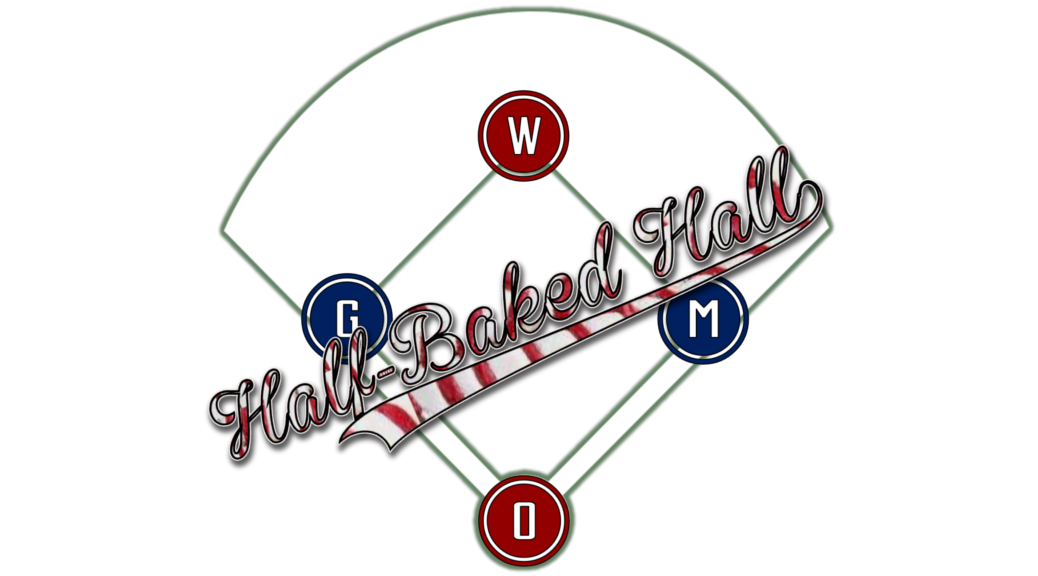Eddie Murray and Ryne Sandberg breeze into the half-baked hall with 100% of the vote.
Otherwise there was no suspense. Valenzuela netted two votes and Greg Gagne landed one. Brett Butler got zero and real Hall of Famer Lee Smith got exactly zero votes. It appears the save statistic does not impress this group.
In 1992, it was mostly good hitters that retired. But there's one pitcher on the ballot you might want to circle.
Who's joining Ross Barnes?
- Bert Blyleven (42%, 16 Votes)
- Gary Carter (37%, 14 Votes)
- Willie Randolph (18%, 7 Votes)
- Pedro Guerrero (3%, 1 Votes)
- Jesse Barfield (0%, 0 Votes)
- Jack Clark (0%, 0 Votes)
- Brian Downing (0%, 0 Votes)
- Carney Lansford (0%, 0 Votes)
- None of them! (0%, 0 Votes)
Total Voters: 16
Former Twin Al Newman had 2.5 WAR. Also, John Moses, who had a solid year for the Twins in 1988, finished his career with negative 3.4 WAR.


People rightly talk about Lou Whitaker getting snubbed by the HoF — he’s probably the best pre-Seligula player* outside Cooperstown. Willie Randolph wasn’t quite as good as Whitaker, but he has as legitimate a grievance as Whitaker about the Hall. Where Whitaker’s rWAR is 7th all-time among second basemen (sandwiched almost perfectly between Charlie Gehringer & fellow snubee Bobby Grich), Randolph is 14th, between Roberto Alomar & Craig Biggio. Every second baseman above Whitaker is in the Hall, and every second baseman above Randolph is, too, with the exception of Whitaker, Grich, and Robinson Canó. (Canó’s path to the Hall looks much less clear these days.)
Randolph debuted with the Pirates on 29 July 1975. He began the season at AAA Charleston, where he hit .339/.405/.479 in 360 PA, but was dreadful in a meager 70 PA after his call-up: .164/.246/.180. The Pirates were swept by the Big Red Machine in the NLCS. Randolph was traded to the Yankmes along with Ken Brett and Dock Ellis for aptly-named Doc Medich in December. You can bet Pittsburgh would take it back if they could: Medich** pitched 179.1 innings with a 99 ERA+ in his single season in Steeltown before being sent to Oakland in a package that returned a decent young second baseman, Phil Garner, and a washed-up second baseman, Tommy Helms. Whitaker’s SABR bio doesn’t explain the rationale behind the trade, and it makes little sense in retrospect. The Pirates’ incumbent second baseman, Rennie Stennett, was okay — a banjo-hitting 24-year-old who unfortunately just had his career year (4.9 rWAR in 1975 against a career mark of 13.4). Stennett had one more good year left in him after that. Randolph was a top-shelf prospect, three years younger than Stennett, who was traded for an innings-eater righty who pitched like a soft-tossing, surgical lefty.
Randolph had a pretty good run between 1976–1989: 58.1 rWAR, which came with an OBP-heavy 105 OPS+ and 258 steals at a 75% success rate. He never put up less than 2.1 rWAR in any season, averaging 4.2 over the span. He was solid, but never spectacular, which led to low Black & Grey ink scores.
* Yes, Bud was Acting Commish during the last few seasons of Whitaker’s career.
** Medich is perhaps most notable for successfully completing medical school at Pitt while simultaneously playing Major League Baseball, which seems harder than playing two pro sports. He eventually became an orthopedic surgeon, though his medical career was tarnished with a prescription-forging scandal.
Randolph and Whitaker both suffer from having low peaks and doing a lot of things well for a very long time but nothing fantastic. Randolph is a poor man's Whitaker, and is along the same lines for me as Don Sutton was on the pitching side. I'm torn.
I take it you're voting for him?
Is he really a poor man's Whitaker when he's ~10 rWAR (and 5 rWAA) less valuable than Whitaker? Randolph's 7-year peak is essentially the same at only 1.6 rWAR less (37.9 vs 36.3). This might be me quibbling on the definition of "poor man's" however.
Middle class man's version then
I probably will. I try not to have a definite rWAR cut-off in mind, since I think the context around a player’s career is pretty significant, but at 60–65 rWAR is where I seem to experience arguments against a player shifting into arguments for a player.
Barfield had 5 ASG-worthy seasons, but only one ASG appearance. dWAR loved him. Not enough counting stats in his relatively brief career.
Jack Clark's ankle injury very well could have been the difference between the Twins winning and not winning the 1987 WS, so that alone might merit his election. His 137 OPS+ career mark is ridiculous. I don't know how he didn't generate more black and gray ink. Too many games missed due to injuries, I guess (he missed a LOT of games; see, e.g., 1980, 1984, 1986). I'd like to vote for him, but won't.
Downing deserves to be in the Geriatric Baseball HOF. From Age-37 to the end of his career (Age-41), he hit 270/372/439 (129 OPS+) -- better than his career marks in each slash category. Vitamin S, or just clean livin'?
Randolph is a first-ballot, Hall of Very Good for a Long Time guy.
This is pretty much spot on how I feel.
Jack Clark had a reputation as a HOFer-level pain in the ass as a teammate.
And coach (as someone living close to where the River City Rascals play)
I was looking at Gary Carter’s b-ref page last night. Over the ten seasons from 1977–1986, he averaged 6.1 rWAR. The only other catcher with a stretch like that is Johnny Bench (6.0 from ‘68–‘77 & ‘69–‘78). Buster Posey’s playing his tenth full season this year and has (to date) averaged 4.1 rWAR. Yadier Molina’s best stretch, ‘07–‘16, yields but 3.4 rWAR/year.
Yea, Carter is a no-brainer.
Bill Dickey, 1930-39, averaged 4.4 rWAR. Joe Mauer, 2005-2014, averaged 4.5 rWAR. Mickey Cochrane, 1926-35, 4.5 rWAR. Yogi Berra, 1950-59, averaged 4.8 rWAR. Mike Piazza comes close, averaging 5.4 rWAR over 1993-2002.
It took him SIX times to get elected. Just ridiculous. At least he got to enjoy it for ten years before he died.